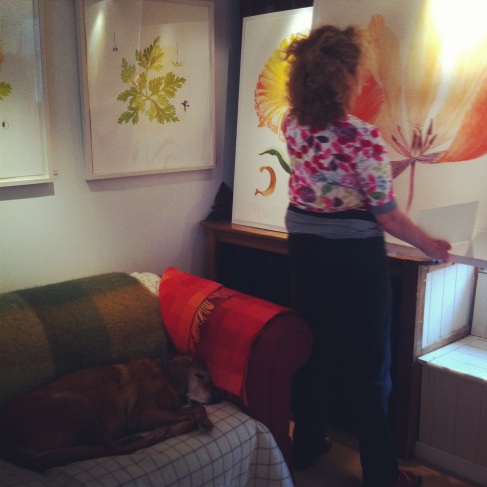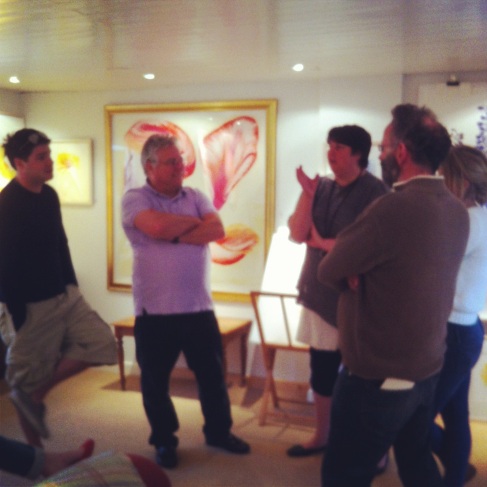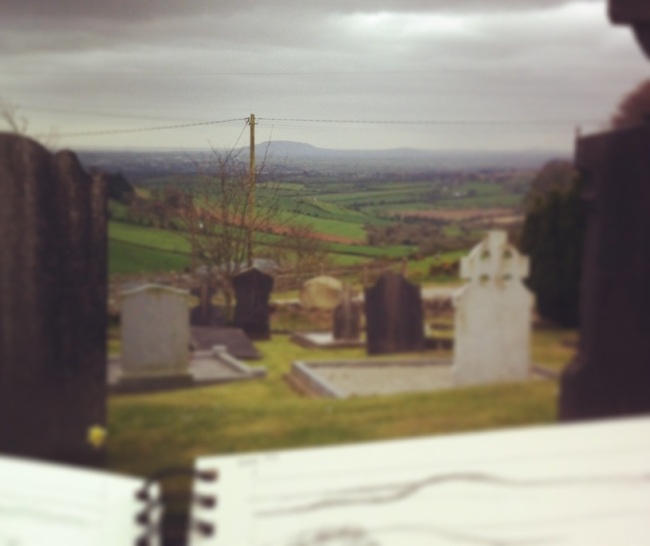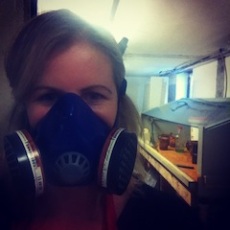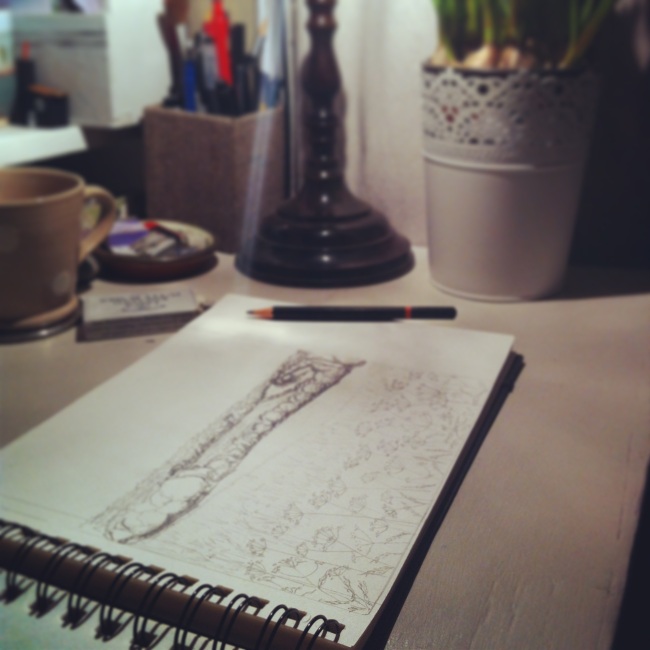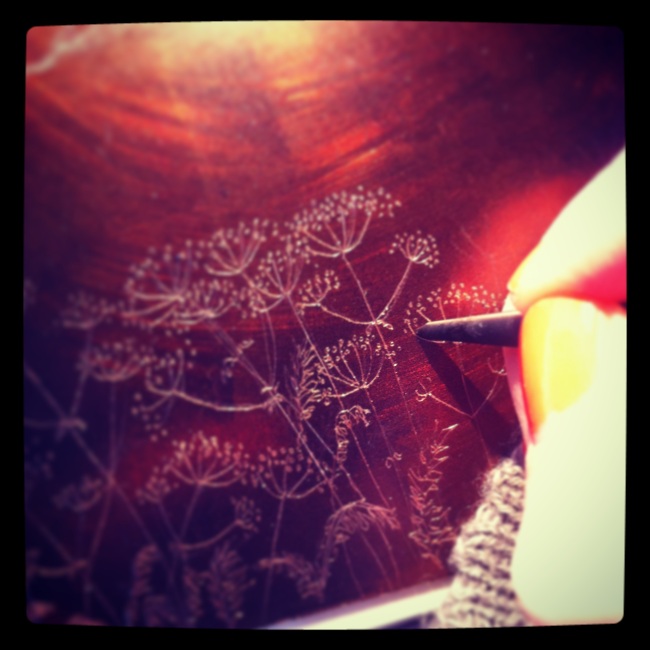I am still recovering from the blur that was last week. I hosted a very special event up in the Mountains. The idea was born a few months ago on a snowy day sitting around the kitchen table of artists Brien Vahey and Grainne Cuffe. They live in the most wonderful old house that has an artistic history at its heart. It was in its past, the home of the renowned painter Camille Souter and she has left her mark around the place, like this beautiful tiled window sill she made…..

As an Interior Stylist I love that house – each room has a different personality each with its own vista of both the sweeping leafy driveway at the front and then different aspect of the mature garden and where it meets the surrounding fields and hills – magical.
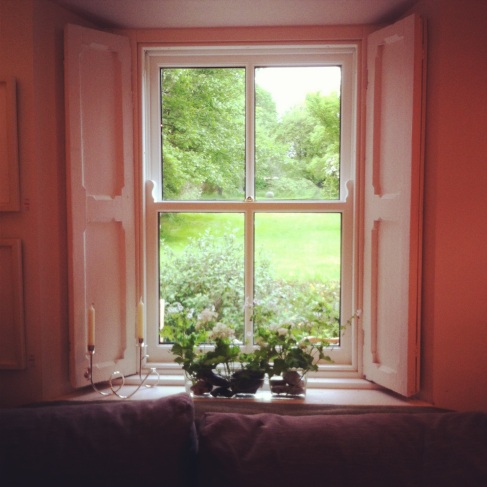
It has always had bundles of artworks piled around the place, but I always felt it would really lend itself as a gallery space to display all the paintings and etchings while letting people see how a piece of art enhances a room – which is one of my missions in my Interior Styling & Home Curation Service.
I put my idea of an opportunity to show their work, and sell it while we’re at it, to Brien & Grainne and they agreed – with trepidation! we decided sometime around Midsummer would work, we committed to the dates and got to work.
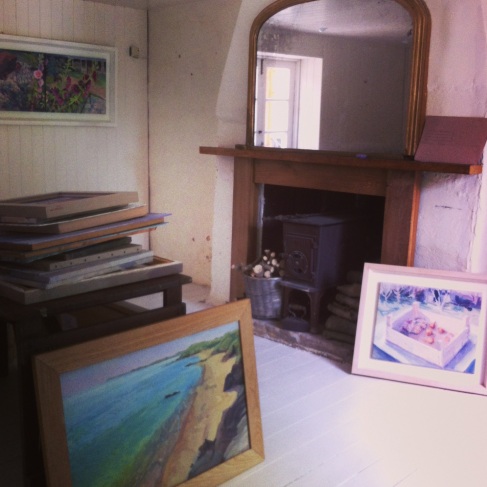
There were weeks of preparation but last week we really got down to brass tacks and spent days and nights decluttering, moving furniture, choosing wines, framing pictures, curating what would hang where, there were cleaners, gardeners and helpful neighbours all mucking in.

moving the piano!

the paint on Brien’s road signs drying at the last minute
So we opened at midday on Saturday, after 24hours of torrential rain, the sun had come out, the bunting was up, the wine was on ice and we were ready. We then suddenly thought … what if nobody comes?! but we needn’t have worried, “If you build it, they will come” I kept thinking and they did. But sure why wouldn’t you?! There was an array of paintings and colourful etchings on display – a feast for the eyes.


There were beautiful wines or elderflower cordial to be sipped

Grainne’s delicious lemon parsley butter on brownbread with smoked salmon to be enjoyed!
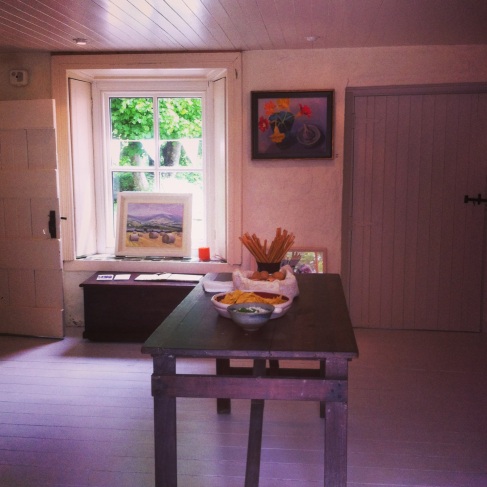
Not only was it an opportunity to peruse the selection of paintings and handmade prints but also to talk the artists themselves. We opened up their studios that are located in the outbuildings and Grainne & Brien took people around and explained the processes involved in creating. What better way to spend a weekend afternoon!

Grainne’s etching studio

one of Brien’s studios (it depends on the season)

The Garden Studio
We had also styled the end sitting room to help people envisage artworks in their own interior
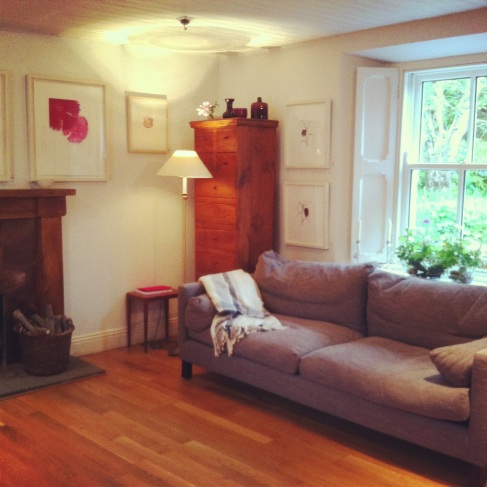
To top it all off, many of the visitors took the opportunity to bag a bargain and begin or extend their art collection (including moi!) and many happy people left with a picture under their arm, while others left with a wish list to save up for having being introduced to the wonderful work of Grainne & Brien. The weekend, the first of its kind, was a huge success and worth all everyone’s hard work. I am now thinking up the next one so watch this space!
Incidentally, if you are interested in any of their works, let me know, as it is available through my Home Curation Service.
Also, Brien runs oil painting courses in Ballymoney, County Wexford – another unique way to spend your weekend.
some more images of the weekend…..

